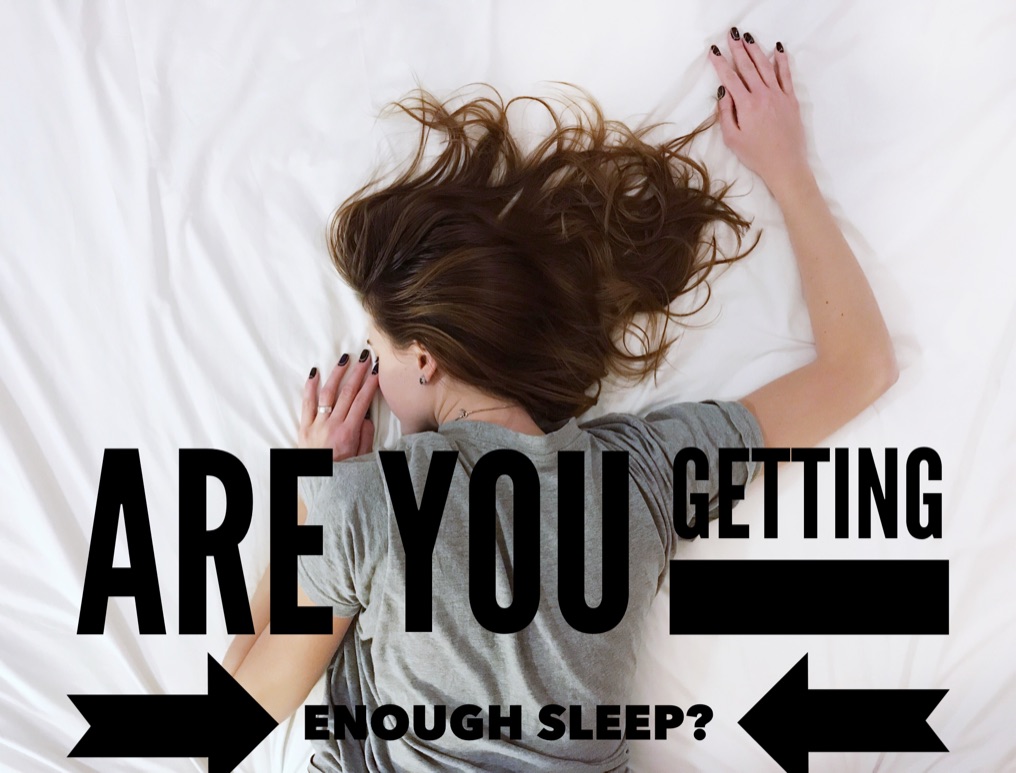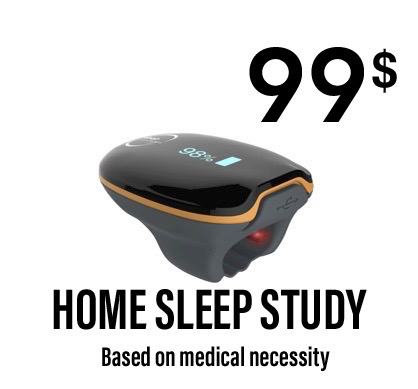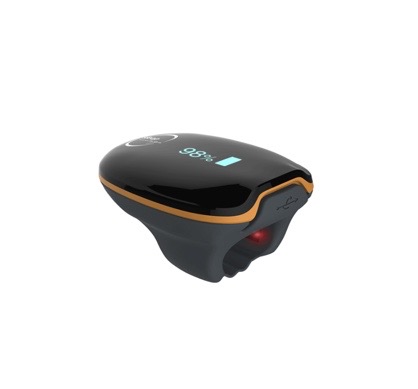Sleep medicine has come a long way from using a vacuum to create a positive airway pressure (the first CPAP) to improve obstructive sleep apnea. A new technology available is a home sleep study that is a Ring by SleepImage. This device is based on evaluating and tracking Cardiopulmonary Coupling, how our heart and breathing connect. We will take the rest of this post to share with you how it has become easier, and just as accurate, to get good information about your sleep.
Why you should get your sleep checked
More and more information has come out on the prevalence of Sleep Disturbed Breathing SBD issues, like Obstructive Sleep Apnea OSA and Upper Airway Resistance Syndrome UARS, (a lot of us don’t know we have issues), but also the health risks of having breathing issues with our sleep.
Questions to ask…
Do you snore?
Are your teeth crowded?
Do you clench or grind your teeth?
Do you suffer from headaches? Especially when you wake up?
Do you have any medical conditions like high blood pressure or gastric reflux/GERD?
Have you had teeth pulled?
Do you feel that you could sleep better?
Are you curious about how well you are sleeping?
Answering yes to a few or most of these questions is usually enough for me as a practitioner to order a home sleep study series.
Health issues for poor sleep
GERD
Weight gain, trouble losing weight
Anxiety and depression
Hypertension/HTN
Heart issues/a-fib or atrial fibrillation
Lower mortality rate (you may die earlier than expected…)
Sleep Disturbed Breathing SBD increases risk factors for disease.

The problem with sleep studies –
What are the problems with sleep studies?
(This is straight from our patients.)
It takes time to get one
Insurance denies your sleep study
Costly – sleep studies can be expensive
Typically, only one night
An in clinic Polysomnograph/PSG is not your bed or home
It’s weird to think of someone watching you while you’re sleeping
I don’t want to do a sleep study because I don’t want a CPAP
Testing equipment can be bulky and uncomfortable affecting your sleep quality
Sleep studies are not common after a procedure or starting CPAP – why is this so? We need an accurate way to get great data, and a lot of it, so why do we stop testing after a treatment is prescribed? The best way to know your treatment is working is to re-test.
If you only have one night…you may over treat or under treat. SDB can vary as much as 18-65%. Careful!
“I don’t want to do a sleep study because I don’t want CPAP.”
Not one profession has all the answers or treatments for sleep. Sleep issues are multi-faceted and sometimes require a team of medical and dental specialists to help resolve or improve your sleep problems.
The number one thing you can do is to get data.
There are things that you can do for yourself. Some of our current sleep problems are things that we can change right now, in how we go to bed and how we get up in the morning.
Simple things you can do if you think you have SDB
What things should I look for to determine if a sleep study is right for me?
Snoring, gasping at night
Dry mouth in the morning, mouth breathing
You feel that you don’t sleep well, and you could be more rested
How do I know if I have a sleep disturbed breathing SDB problem?
More than 80% of people who suffer from the effects of mild-to-moderate obstructive sleep apnea are completely unaware. Because of this it is important to get good information about your sleep. We recommend an FDA approved home sleep study to start as it is much cheaper than an in-clinic polysomnography (PSG), it is in your own bed, and we get more than one night of data to look for trends.
Basing a sleep diagnosis on only one night can lead to under treatment or over treatment of sleep disturbed breathing.
There are a lot of symptoms which may indicate you suffer from interrupted sleep or SDB. Symptoms include mouth breathing, snoring, gasping episodes as well as daytime drowsiness. Other signs include headaches, especially in the morning, depression and anxiety, as well as chronic pain. Left untreated, OSA can lead to a wide variety of health risks including a reduction in your lifespan (you could lose years off your life). Basically, your mortality rate is much higher with untreated sleep disturbed breathing than those that do not have issues.
Sleep Disordered Breathing and Mortality: Eighteen-Year Follow-up of the Wisconsin Sleep Cohort

For more information you can call The Headache Center or Cornerstone Physical Therapy at 719-596-5000.
“I don’t want to have a CPAP, so I won’t get a sleep study.”
Does this sound like you? That was my initial posture with my sleep until the effects of a poor night’s sleeping over years was worse than doing anything about my sleep.
There are many options for treatment of sleep disturbed breathing SDB and obstructive sleep apnea OSA. Sometimes the simpler solutions are the best and can help. That is typically the place that we start. When you have consistent data, you can make good decision for YOUR health.
Treatments available
Dentist
Dental appliances
Orthodontics – Check out Dr. David Singh and Vivos
ENT
Allergy
Food allergy and elimination diet
Tonsils, Tonsillectomy
Deviated septum – nasal airway resistance
Dermatological laser resection of the soft palate (There can be risks for this procedure)
Family Practice
Weight loss with your medical provider, personal trainer, etc
Health assessment and workup
Sleep Medicine
Medication
CPAP, AutoPAP, BiPAP
Surgeries like Inspire – there is a pacemaker put into your body.
You’re convinced! What do you do next?
Meet the Ring from Sleep Image

SleepImage is an FDA approved device and software utilizing a new technology called Cardiopulmonary Coupling. What companies like SleepImage have done is to compare all the patterns that your heart rate, breathing and blood oxygen do at an extremely sensitive level. Tracking these patterns, called non-linear dynamics, can give an accurate picture of what our autonomic nervous system (think ‘automatic’ nervous system) is doing during sleep.
“SleepImage is a simple to use and low-cost method that offers the opportunity of multi-night testing during the process of evaluating if there may be a sleep disorder, to evaluate night-to-night variability in sleep and to track changes in sleep over time, as part of sleep health management.”
Can my smart watch or ring I purchased on the internet accurately track my sleep?
Over the last few years, we have compared our sleep studies (with FDA approval) against smart watches and even CPAP’s. (Although we have not done a sleep study in a smart bed…yet) My watch gave me two ‘thumbs up’ saying I had the best sleep of my night while my FDA approved home sleep study said I had severe obstructive sleep apnea. Make sure you are using a device that has the proof that it does what it says it does. Look for FDA approved sleep devices and studies. Then, see how well this device compares to the American Academy of Sleep Medicine ‘reference standard’, an in-clinic polysomnography PSG. There are more accurate home sleep studies, like the Ring from SleepImage.
Why is the Ring so cool?
IT’S ACCURATE
Its accuracy on getting data is VERY close to an expensive in clinic polysomonograph. It is 90-100% in agreement, sensitivity AND specificity for a big marker of obstructive sleep apnea, the AHI or Apnea Hypopnea Index. Basically, this tracks how many times you drop in blood oxygen on average every hour you sleep. This was for the ages of 2 and up!
IT’S SMALL
It’s a ring on your finger making it non-invasive and very easy to do.
IT’S CHEAPER
The Ring allows us to provide a MUCH CHEAPER option for doing home sleep studies, and therefore more nights of data.
IT’S AT HOME
In your bed, with your pillow and your dog.
IT’S MORE THAN ONE NIGHT
Those of us with Sleep Disturbed Breathing issues can have nightly fluctuations in our AHI (Apnea Hypopnea Index) 18% to 65%. Because of this fluctuation night to night and month to month it is even more important to get multiple nights. Sometimes spread out over a month. This is so we avoid under treating or over treating a sleep problem.
“In patients with mild to moderate sleep apnea, one night of portable testing can lead to misclassification of disease severity given the substantial night-to-night variability in the AHI.”
The Headache Center’s standard of sleep study nights is 3 nights to look for trends and get a baseline. If we have good data, then with the added imaging and clinical exams by The Headache Center team, choices of treatment for sleep issues, and which profession is best suited to help you, is much clearer.
Get tested and then re-tested to know if what you are doing is helping.
Getting Started
Start simple, get control of your allergies
Develop healthy habits of going to bed and waking up
Try a wedge pillow
GET TESTED!
For more information you can call The Headache Center or Cornerstone Physical Therapy at 719-596-5000.